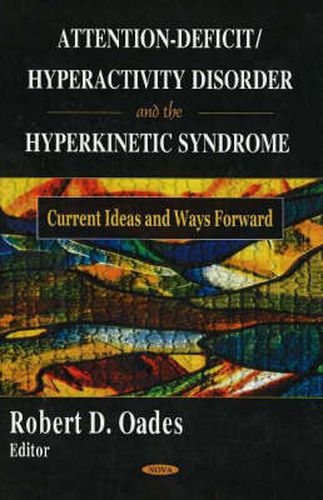Readings Newsletter
Become a Readings Member to make your shopping experience even easier.
Sign in or sign up for free!
You’re not far away from qualifying for FREE standard shipping within Australia
You’ve qualified for FREE standard shipping within Australia
The cart is loading…






There is a dynamism among current ideas on AD/HD research which is extraordinarily encouraging as we look to the future and the resolution of the problems of AD/HD. We can have more confidence than of late that we can determine and rate the problems grouped under the rubric of AD/HD (chapter 1), delineate them with respect to some prominent (if not all) related behavioural disruptions (chapter 2) and have some confidence in an inter-cultural commonality of a problem that may respond to attention from professional care-givers (chapter 4). We are standing already at the second stage of an understanding and attribution of genetic and environmentally mediated traits (chapter 3, 9 and 10): that the way forward (towards which feature(s) trigger(s) which effect(s)) may involve tens of stages is exciting - for the first results are at hand (e.g., DRD4). Which amine systems (DA, NA, 5-HT, adrenaline, acetylcholine) intervene with anomalous function is better understood qualitatively than quantitatively (chapters 5-8). Perhaps this link in the chain of understanding remains in the most primitive state, among the fields discussed in this book. What elements control the transport of a monoamine within the synapse and synaptic bouton (e.g., vesicle transporters, and neurexins), let alone the rules for extraneuronal uptake and release in neighbouring systems (e.g. DA by NA systems)? This knowledge will determine future generations of biologically based treatments . Chapter 12 an 13 have illustrated how (in principle) we may determine, with simple neurophysiological means, for whom precisely will these work, and on what neural systems and psychological functions are they effective. The current ideas are promising, a body of knowledge is there, many details still need to be teased out, but the way forward has been indicated.
$9.00 standard shipping within Australia
FREE standard shipping within Australia for orders over $100.00
Express & International shipping calculated at checkout
There is a dynamism among current ideas on AD/HD research which is extraordinarily encouraging as we look to the future and the resolution of the problems of AD/HD. We can have more confidence than of late that we can determine and rate the problems grouped under the rubric of AD/HD (chapter 1), delineate them with respect to some prominent (if not all) related behavioural disruptions (chapter 2) and have some confidence in an inter-cultural commonality of a problem that may respond to attention from professional care-givers (chapter 4). We are standing already at the second stage of an understanding and attribution of genetic and environmentally mediated traits (chapter 3, 9 and 10): that the way forward (towards which feature(s) trigger(s) which effect(s)) may involve tens of stages is exciting - for the first results are at hand (e.g., DRD4). Which amine systems (DA, NA, 5-HT, adrenaline, acetylcholine) intervene with anomalous function is better understood qualitatively than quantitatively (chapters 5-8). Perhaps this link in the chain of understanding remains in the most primitive state, among the fields discussed in this book. What elements control the transport of a monoamine within the synapse and synaptic bouton (e.g., vesicle transporters, and neurexins), let alone the rules for extraneuronal uptake and release in neighbouring systems (e.g. DA by NA systems)? This knowledge will determine future generations of biologically based treatments . Chapter 12 an 13 have illustrated how (in principle) we may determine, with simple neurophysiological means, for whom precisely will these work, and on what neural systems and psychological functions are they effective. The current ideas are promising, a body of knowledge is there, many details still need to be teased out, but the way forward has been indicated.